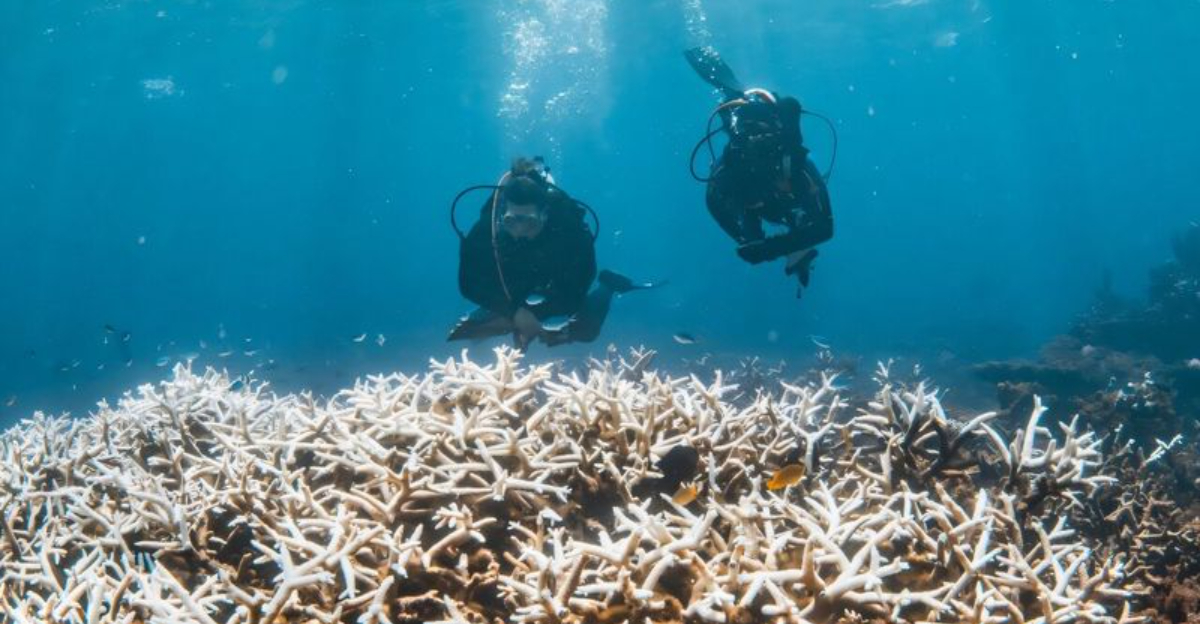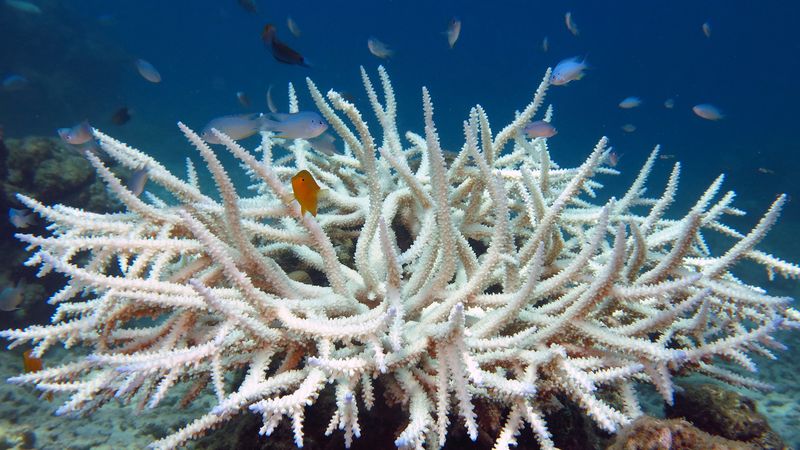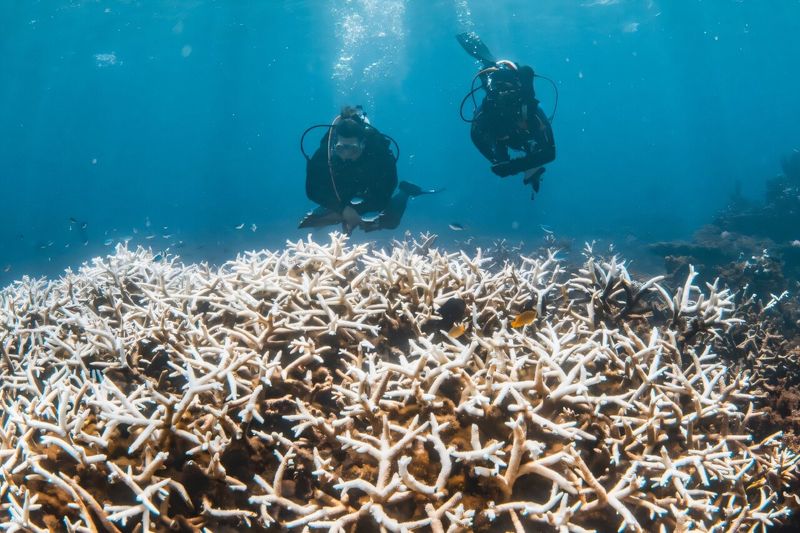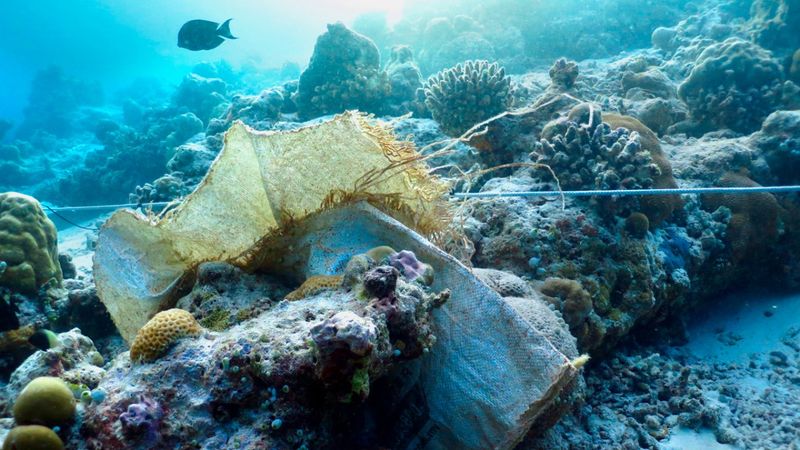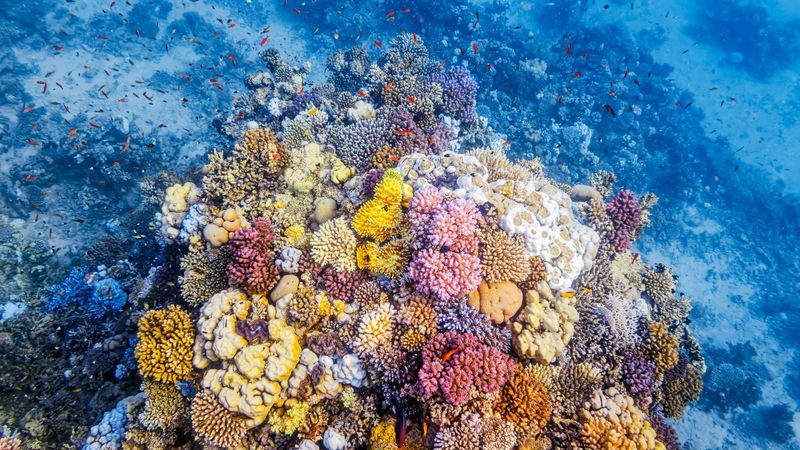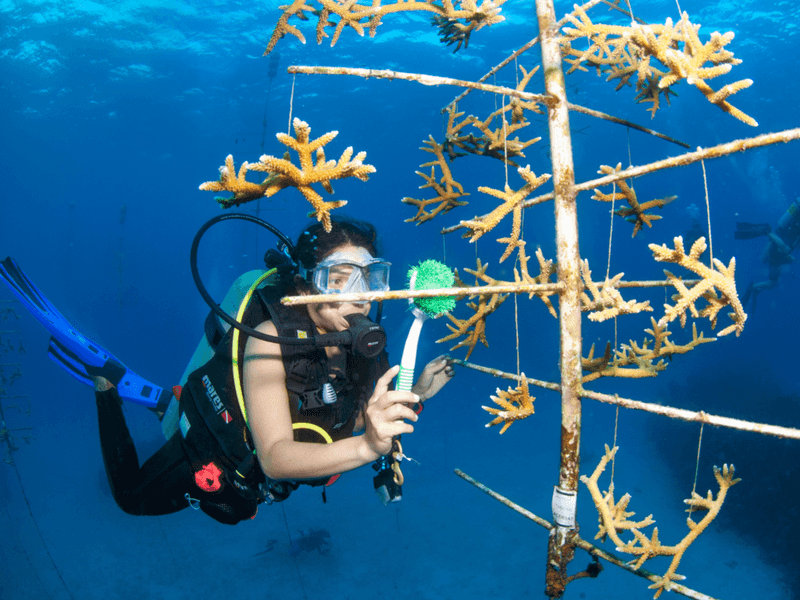Our ocean’s most colorful treasures are fading away. Coral reefs, home to 25% of all marine life, are dying at an alarming rate worldwide. The 2023-2025 global bleaching event affected a shocking 84% of Earth’s coral reef ecosystems, turning vibrant underwater cities into ghost towns. This massive coral die-off isn’t just a tragedy for sea creatures – it’s sending us urgent warnings about our planet’s health.
Ocean Fever: Rising Temperatures Spell Disaster
Corals are having hot flashes – and it’s killing them. When ocean temperatures climb too high, corals get stressed and kick out their colorful roommates – tiny algae called zooxanthellae that provide food through photosynthesis. Without these algae, corals turn ghostly white and begin starving.
The Great Barrier Reef has suffered five major bleaching events since 2016 alone. Many reefs worldwide have lost over 90% of their coral cover during the latest global bleaching catastrophe. Imagine losing 9 out of 10 buildings in your neighborhood – that’s what’s happening underwater!
Scientists warn that if global temperatures rise by 2°C, we could lose up to 99% of coral reefs worldwide. The ocean’s fever isn’t breaking – it’s getting worse as climate change intensifies, giving corals less time to recover between heat waves.
Ecosystem Collapse: When Coral Cities Crumble
Bustling underwater metropolises are turning into marine ghost towns. Healthy coral reefs support over 4,000 fish species and countless other creatures, but when corals die, entire food webs unravel. Fish lose their homes, hunting grounds, and breeding sites.
Local fisheries that feed millions of people are disappearing along with the reefs. In the Philippines, where reef fishing provides essential protein for coastal communities, fishermen must travel farther and work longer hours to catch fewer fish. The economic impact is staggering – healthy coral reefs generate $36 billion annually through tourism, fishing, and coastal protection.
Coral skeletons also serve as natural seawalls, protecting coastlines from storms and erosion. Without this barrier, coastal communities face increased flooding and property damage, especially as climate change brings more powerful hurricanes and rising sea levels.
Chemical Warfare: Pollution’s Deadly Attack
Climate change isn’t the only villain in this underwater tragedy. Chemical pollutants from farms, factories, and cities flow into oceans and launch a multi-pronged attack on coral health. Fertilizer runoff triggers massive algae blooms that block sunlight and rob corals of oxygen when they decompose.
Sunscreen contains another surprising coral killer. Oxybenzone, a common ingredient in many sunscreens, damages coral DNA and disrupts reproduction – even at extremely low concentrations. Just one drop in six Olympic-sized swimming pools can harm corals! Hawaii and several other tourist destinations have banned these harmful sunscreens to protect their reefs.
Plastic pollution adds another deadly dimension. Microplastics attract bacteria that cause black band disease, which creates dark rings that spread across corals like a plague, killing tissue as they advance. Each year, up to 14 million tons of plastic enter our oceans, much of it ending up on coral reefs.
Nature’s Warning System: Coral Canaries in the Coal Mine
Coral reefs function as Earth’s early warning system. Their rapid decline signals dangerous planetary changes before other ecosystems show obvious damage. The same warming oceans killing corals are also disrupting weather patterns, melting ice caps, and intensifying storms worldwide.
Reefs also warn us about ocean acidification – the evil twin of climate change. As oceans absorb more carbon dioxide, seawater becomes more acidic, making it harder for corals to build their calcium carbonate skeletons. Think of it like osteoporosis for the ocean – coral skeletons become brittle and grow more slowly.
Scientists call corals the rainforests of the sea because both ecosystems serve as biodiversity hotspots and climate regulators. Just as Amazon deforestation accelerates climate change, coral loss creates a dangerous feedback loop that further warms oceans and threatens all marine life.
Rays of Hope: Rescue Missions and Resilient Corals
Against overwhelming odds, coral champions are fighting back. Marine biologists have identified “super corals” that somehow survive in warmer, more acidic waters. By selectively breeding these hardy specimens, scientists hope to create more resilient reefs that can withstand our changing oceans.
Innovative coral nurseries operate like underwater gardens where broken coral fragments are grown on structures resembling underwater clotheslines. Once mature, these corals are transplanted to damaged reefs. The Coral Restoration Foundation has already planted over 170,000 corals on Florida’s reefs using this method.
The Global Fund for Coral Reefs aims to raise $3 billion by 2030 for conservation efforts. Success stories exist – Belize’s Barrier Reef was removed from UNESCO’s endangered list after the country banned offshore oil drilling and strengthened marine protections. Every reef saved represents hope for ocean ecosystems and the millions of people who depend on them.
